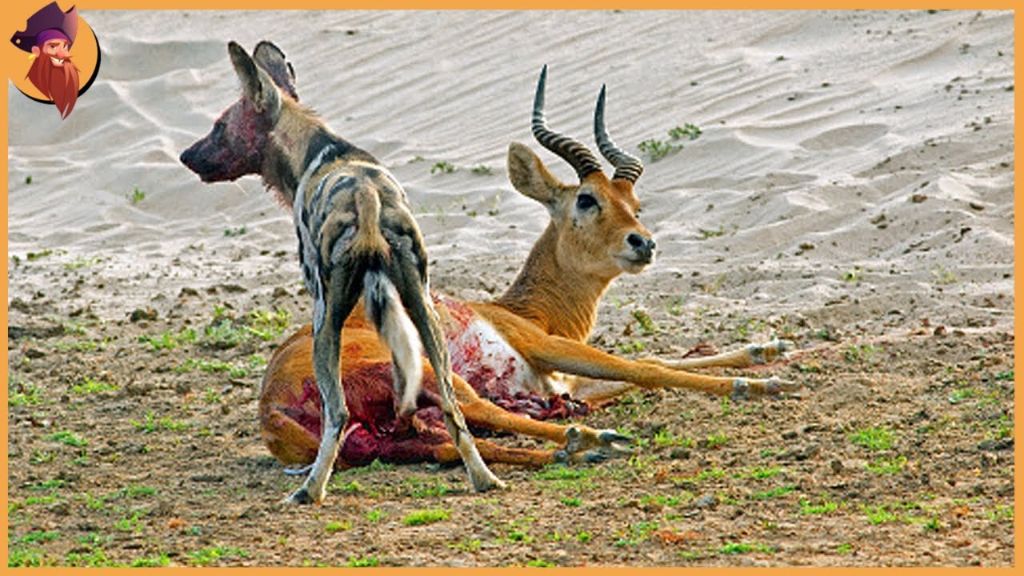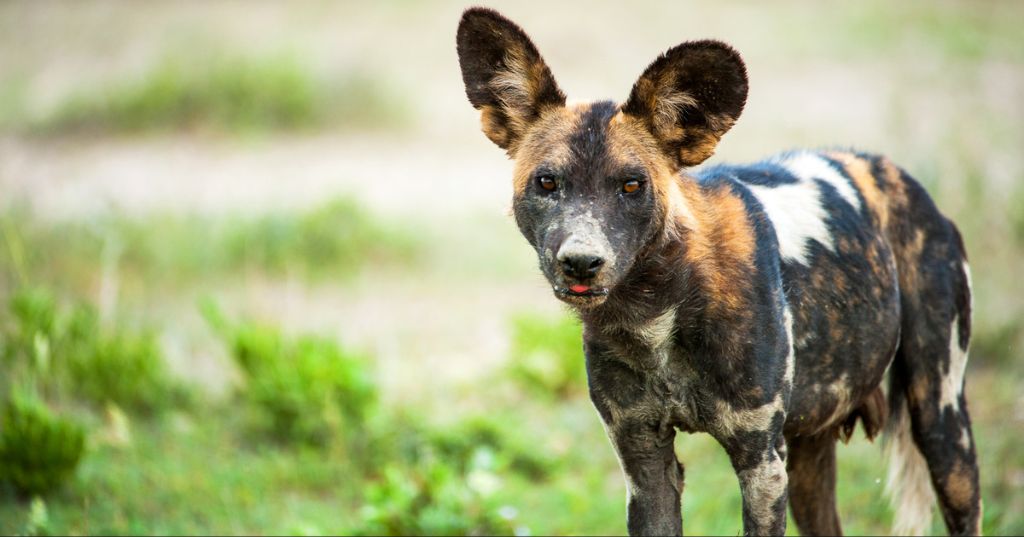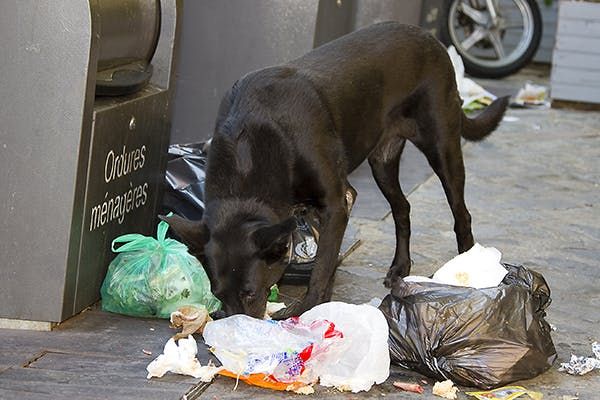Introduction
Wild dogs are efficient predators that have evolved to hunt and feed in packs. One notable aspect of their hunting behavior is that they often begin eating their prey while it is still alive. There are a few key reasons why wild dogs eat their prey alive, which this article will explore in depth.
To start, it is important to understand the general hunting and feeding patterns of wild dogs. African wild dogs, also called painted dogs, are social canines that live and hunt in coordinated packs. They pursue prey through relentless chasing, working together to isolate and exhaust their target. Once the prey is secured, the pack quickly tears into the carcass, eating rapidly while the prey may still be alive.
This behavior contrasts with many solitary predators like lions that typically kill their prey through suffocation before feeding. However, the social nature and high energy needs of wild dogs have led to some unique evolutionary adaptations that make eating live prey beneficial for them.
Hunting Behavior
African wild dogs rely on a highly sophisticated pack hunting technique to catch prey. Packs can consist of 6-20 adults and yearling pups who coordinate to isolate, pursue, and seize prey animals (Why do African wild dogs have such a high hunting success rate and why more than big cats). Unlike other predators, wild dogs do not ambush prey. Instead, they employ an exhausting, strategic pursuit that tests prey endurance and herd cohesion (Animal Facts: The Wild Dog).
The lead hunting dogs act as “spotters” to locate potential prey and begin pursuit. Other pack members fan out far and wide to encircle and trap prey. The wild dogs take turns leading the chase to conserve energy. Some run alongside prey to funnel them in the desired direction while others nip at the hind quarters to cause prey to zig-zag and tire out. If the prey scatter, dogs will split up and concentrate efforts to isolate the weak without rest. This cooperative persistence often wears down swift prey like gazelles to seize a meal.
Eating Habits

Wild dogs tend to start eating prey while it is still alive.1 This behavior allows them to begin feeding as soon as possible without waiting for the prey to die first. Wild dogs have very high metabolisms and caloric needs in order to support their active lifestyles, so eating fresh meat efficiently is a priority.2 Starting to feed right away also reduces the risk of having their kill stolen by competing predators or scavengers. Since wild dogs hunt in packs, they are able to hold down struggling prey while pack members start ripping into the soft underbelly and hindquarters. The prey is eventually overwhelmed and either dies from blood loss or trauma.
Scavenging Risks
Wild dogs face many dangers when waiting for prey to die before eating instead of consuming it while still alive. One major risk is that other predators may steal their kill. Hyenas, lions, leopards, and jackals often compete with wild dogs for food sources. If wild dogs delay eating, these other carnivores can scare them away and take over the carcass. There is fierce competition over food, so wild dogs need to start feeding as soon as possible after the takedown. According to https://www.youtube.com/watch?v=kdLUPUh3lE4, hyenas will aggressively mob wild dogs to push them away from a fresh kill so they can take it for themselves. Waiting to start eating gives competitors more opportunity to swoop in and claim the prey.
In addition to theft by other predators, there is the risk that the prey animal may not actually be dead if consumption is delayed. Prey have survival instincts and can sometimes recover from initial takedowns. If wild dogs do not start tearing into the flesh quickly, the prey may get up and try to escape. This would completely deprive the pack of needed sustenance. Starting to eat immediately ensures the prey is fully dead and unable to flee.
Lastly, waiting comes with the risk of attracting scavengers like vultures that can contaminate the carcass with bacteria and disease. It’s safer for wild dogs to eat fresh kills before flies, vultures, and other scavengers discover them.
Caloric Needs
African wild dogs have extremely high metabolic rates compared to other predators, requiring about 1,500 calories per day for an average adult (1). This means they need to eat about 20% of their own body weight per day in meat. Their high caloric needs are due to their active hunting lifestyle and lean bodies adapted for endurance running. Wild dogs will lose about 1% of their body weight per hour when active if they haven’t eaten (1). To maintain their energy, they need frequent meals. This is why capturing and eating prey quickly and efficiently is so important for wild dog packs.

Wild dog pups have even higher caloric needs than adults to support their rapid growth. Research has found that wild dog puppies in their first 3-4 months of life require 300-500 calories per kilogram of body weight per day, approximately three times the calories needed by an adult dog of the same size (2). Their food intake steadily decreases as they mature. Meeting these extreme caloric requirements is critical for the pups’ development and survival.
(1) Lycaon pictus – an overview. (n.d.). Retrieved from https://www.sciencedirect.com/topics/agricultural-and-biological-sciences/lycaon-pictus
(2) Research on Feeding Regimens and Growth for African Painted Dogs. (n.d.). Retrieved from https://www.endangeredwolfcenter.org/blog/feeding-regimens-growth-african-painted-dogs-research/
Prey Survival Instincts
Prey animals like antelope, deer, rabbits, and rodents have strong survival instincts that help them avoid being killed by predators. As prey, they are constantly on high alert and ready to flee at the first sign of danger (Reddit). Even though they are hunted by wild dogs and other predators, prey animals will fight back fiercely when cornered and left with no other option. This is because all animals, including prey species, have a fundamental drive to do whatever it takes to survive (Quora).
When wild dogs start eating their prey while it is still alive, this triggers the prey’s primal survival instincts. Unless they are incapacitated, prey animals will kick, struggle and attempt to escape while being eaten alive (Rabbits.life). They do not passively accept their fate, but rather fight for their life until their last breath. Wild dogs have adapted to pin down and restrain struggling prey as they eat to overcome these survival instincts.
Pack Feeding Strategies
Wild dogs live in packs, which allows them to successfully hunt larger prey animals than a lone wild dog could take down. Research has shown that there is a clear social hierarchy within a pack that dictates the order in which each dog gets to eat at a kill (African Geographic). The alpha pair always eats first, followed by the rest of the adult dogs. The lowest ranking members of the pack are the younger dogs, who eat last. This social hierarchy ensures that the dominant breeding pair gets sufficient nutrition to produce offspring. It also allows the alpha dogs to monopolize the choice body parts like the liver and heart. The pups eat last but are often allowed first access to the scraps and carcass remains after the higher ranked pack members have had their fill.

Jaw and Teeth Design
Wild dogs have evolved specialized jaws and teeth to allow them to quickly and effectively consume live prey. Their jaws are incredibly strong, allowing them to maintain a firm grip on struggling prey (Coyote Teeth: Everything You Need to Know, 2022). Wild dogs have large, sharp teeth designed for shearing flesh, with molars adapted for cutting rather than grinding (The Wild Canine Of Africa, 2022). These physical adaptations allow them to tear off and swallow chunks of flesh rapidly. Their bite force is powerful enough to quickly crush bones to access marrow. With long jaws containing up to 40 teeth, wild dogs can make deep, tearing bites in rapid succession to swiftly consume their prey before it can escape or fight back.
Disease Prevention
When African wild dogs take down prey, they often eat it alive or begin consuming the organs and viscera when fresh kills are made. This behavior is believed to help prevent the spread of disease from eating carcasses infected with bacteria, viruses or other pathogens (de Almeida Curi, 2016).
Since wild dogs typically feed in large packs, avoiding contaminated meat reduces the risk of multiple dogs contracting diseases that could spread through the pack. By eating prey while still alive or immediately after the kill, wild dogs reduce their exposure to pathogens and bacteria that grow over time in dead carcasses left rotting on the savannah.
According to research from the National Center for Biotechnology Information, diseases like rabies, canine distemper virus and canine parvovirus are particular concerns for wild dog populations. Their social pack behavior can enable rapid disease transmission (de Almeida Curi, 2016). Consuming fresh kills is an adaptive behavior to mitigate disease risks.

Conclusion
In summary, African wild dogs eat their prey alive for several key reasons:
Wild dogs have very high caloric needs and eating quickly helps them consume as much nutrition from the kill as possible before other predators steal the carcass. Their jaws and teeth are adapted for quickly tearing off flesh, making it easy for them to begin eating immediately.
Since wild dogs hunt in packs, they need to start feeding quickly before the prey succumbs to shock or bleeding. Eating the prey alive allows them to start feeding immediately and make the most of the fresh kill.
By targeting the soft underbelly and anal/genital areas first, wild dogs are able to incapacitate and weaken the prey to prevent injury to the pack. Their strategy of eating alive subdues prey survival instincts and minimizes risks.
Overall, wild dogs’ habits of eating prey while still alive seem cruel but are actually just hunting adaptations that help them effectively feed the entire pack on limited resources in the competitive African wilderness.
